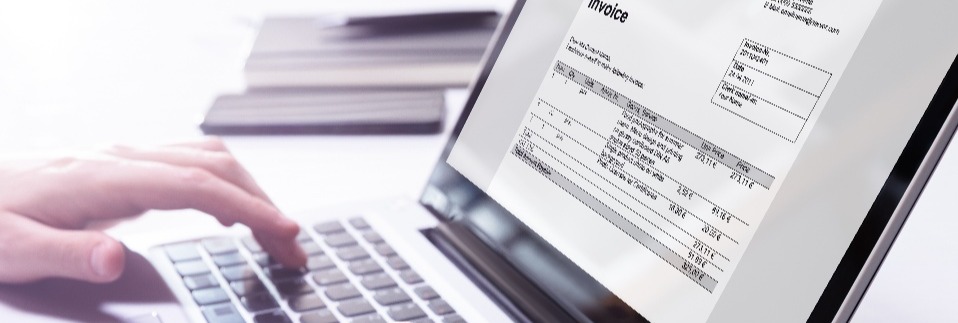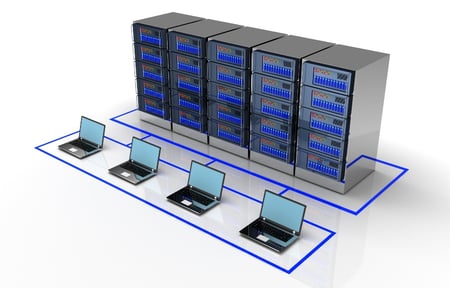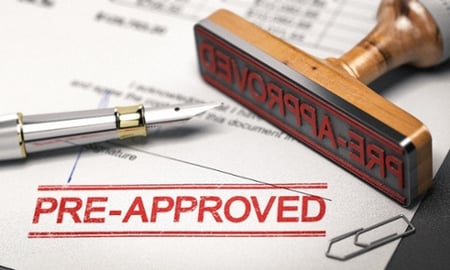
Why are so many businesses still keying invoices manually?
Process Management
We’re in a dynamic and fast-changing world of technology and believe it or not, businesses are still undertaking tasks such as invoice processing manually. They are keying the invoice from the paper or a document viewer and entering each value one by one.
The question becomes, why has it taken so long for your company to consider reducing the number of people and implementing an automated system? The reality is, there are many reasons why, but most importantly, automated invoice processing solutions used to be expensive and complex to implement.
Why were older solutions more expensive?
Many factors contributed to the costs of implementing a solution but here is an example of a model from 10 years ago:
![]() Capture Server and Capture Software
Capture Server and Capture Software
![]() OCR Server(s) and Software
OCR Server(s) and Software
![]() Document Storage Server and Software
Document Storage Server and Software
![]() Workflow Server and Software
Workflow Server and Software
This meant companies would have had to stand up a minimum of 4 production servers, plus a non-production environment of a further 4 servers and then a DR system on top. Therefore, to consider implementing Invoice Automation required 12 servers plus the software and that’s before an implementation timeframe of 6-12 months.
The result of this was that projects typically ran into the hundreds of thousands, not just the tens of thousands. This, made making the starting point of viability for the project much higher. The return on investment was never viable for firms processing less than 100,000+ invoices a year. Those less than that implemented them for other reasons such as governance and compliance, but it was an expensive nice to have rather than efficiency gains being achieved.
Historically, the majority of invoices arrived in the post as paper invoices, today the majority of invoices arrive electronically either via email as a PDF or via EDI as XML. Trying to process these manually is pointless (although some are still printing them off and keying them in!), whilst enabling these invoices to be processed automatically is a natural progression.
A lower threshold – financially
There is now a much lower threshold to consider invoice automation and buying a solution to meet your needs. Firstly, a solution can be bought from a SaaS provider. It’s no longer about buying servers and software, with an installation of these components followed by a technical heavy implementation. The offerings today enable a business to buy a Web-Based Application that can be configured by the provider in weeks not months.
This means you don’t have to incur the same level of costs and most solution providers use one or two metrics for pricing of production instances, for example, price per invoice and user volumes. In addition to these charges, there will be onboarding costs, which are much lower and more manageable figures than before, as it only takes a few weeks not months to implement, including a non-production environment. This means the entry point for solutions can start as low as 25,000 invoices per annum or even below this if you have high-value invoices.
A much lighter implementation requirement
Furthermore, the ability to configure a SaaS solution to meet your business needs is typically far simpler because there is no longer the need to build the workflow process from scratch. Approval processes for Non-PO can be put together in a few days or weeks and the PO process can be delivered out of the box when connecting to your Oracle ERP. This means the greatest challenge for delivering invoice automation is ensuring you allocate time to your finance team to undertake testing.
 The implementation no longer places the same level of demand on your resources either. Before the project team looked something like this:
The implementation no longer places the same level of demand on your resources either. Before the project team looked something like this:
![]() Program Manager (it inevitably coincided with ERP implementations and upgrades)
Program Manager (it inevitably coincided with ERP implementations and upgrades)
![]() Project Manager
Project Manager
![]() Business Analyst
Business Analyst
![]() AP Team Lead
AP Team Lead
![]() AP Team for Testing
AP Team for Testing
![]() Technical Lead
Technical Lead
![]() DBA(s)
DBA(s)
This was just the company's implementation team, beyond that you had your Service Integrators team of 4-6 people as well, which normally correlated to the equivalent of 2 people permanently on your project on both sides, at a very high cost. Now an implementation can be completed in less than 10 weeks and the team you need to allocate are primarily the AP personnel who will be using the system and will only be required for a few days and not heavy technical resources.
What savings/benefits are achievable?
There are several elements that factor into savings for implementing invoice automation, they are:
- Reduction in effort and data entry errors in manual keying
- PO Invoices go Straight Through
- Handling exceptions on invoices that could mean one or two keystrokes before processing through to payment
- Visibility of invoices upon arrival
- Reporting data on average processing time so you can see how effective your staff are
- Governance and control of your invoice process
- No “lost” invoices
- With a full audit trail of who, what and when of all the steps undertaken
There are many benefits to invoice automation, if your business is still keying manually then take the time to consider your options.
Pre-Approving a Non-PO Invoice?
|
|
Do you have a process in place to approve non-PO invoices before they enter your ERP system? If so, how do you keep track of the audit history? It's crucial to establish a clear approval process for non-PO invoices in your company. While we recommend using a formal procurement system to generate purchase orders, we understand that this isn't always feasible. In today's complex business environment, it's important to maintain an audit history of all non-PO invoices that enter your ERP system. Pre-approving these invoices before they enter the system helps ensure that their transactions are transparent and accurate. This approach can also prevent errors and discrepancies in the ERP system. Additionally, pre-approval ensures that all invoices comply with your company's internal policies and procedures. |
On-Demand Webinar on the ABC's of a Business Case for Automated Invoice Processing |
|
Watch our On-Demand Mi Invoices Webinar reviewing the ABCs of a Business Case for Automated Invoice Processing, providing our best practice recommendations Join Jason Howard and Duncan Coyle in a discussion about the essential components needed to develop a compelling business case for automating invoice processing. This solution can improve business efficiency, reduce costs, and enhance your finance and procure-to-pay operations. |














